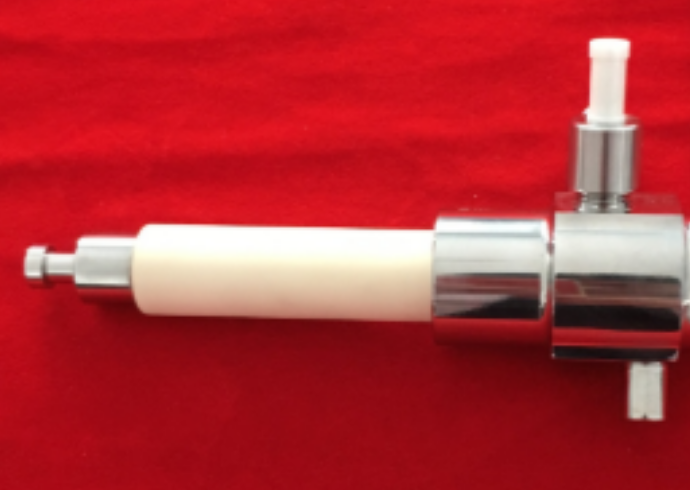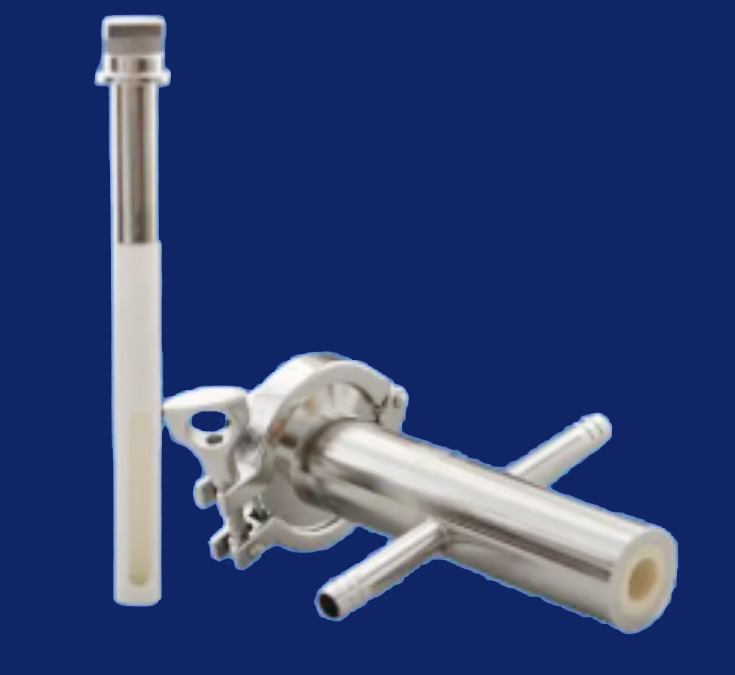1. What is a ceramic filling pump:
A ceramic filling pump is a precision fluid conveying device with high-performance ceramic materials (such as zirconia and alumina) as its core components. It is specially designed for liquid conveying and quantitative dispensing that require high hygiene, high corrosion resistance or high precision. Compared with traditional metal or plastic pumps, its ceramic components have extremely strong wear resistance, chemical inertness and sterility, and can withstand corrosive media, particle suspensions and high-temperature sterilization.
Its working principle is usually based on mechanical reciprocating motion or pneumatic drive. It controls the flow rate through the precise cooperation of ceramic plungers and sleeves, and combines sensor feedback to achieve closed-loop control, ensuring that the filling accuracy can reach the microliter level. The hardness (above HRA88) and low friction coefficient (0.02) of ceramic materials allow it to operate for a long time without lubrication, avoiding the leakage problem of metal pumps caused by wear. At the same time, its surface smoothness (Ra≤0.1μm) and high-temperature resistance (capable of withstanding steam sterilization above 140℃) perfectly meet the sterility requirements of industries such as pharmaceuticals (e.g., vaccine filling), food and beverages, and cosmetics. It ensures no pollution, no leakage, and an error rate as low as within ±0.5%. Meanwhile, its service life is far longer than that of traditional metal pumps, complying with strict standards such as GMP and FDA.
2. Application Fields and Core Ceramic Materials of Ceramic Filling Pumps:
Ceramic filling pumps, with their precision and reliability, have become core equipment for fluid control in multiple industries. In pharmaceutical manufacturing, the production of sterile injections is extremely sensitive to metal ions, and the zirconia plungers of ceramic pumps can ensure that high-value liquid medicines such as vaccines and antibiotics are free from contamination. In the field of new energy batteries, the transportation of electrolytes requires the iron ion precipitation to be less than 0.1ppb, and the corrosion resistance of ceramic pumps significantly improves the cycle life of batteries. In semiconductor manufacturing, the coating of photoresist requires a pulsation rate of less than 0.5% to avoid delamination, so the stable output of ceramic pumps becomes crucial. Moreover, in the chemical mechanical polishing (CMP) process, their characteristic of no particle shedding can reduce wafer defects. The food and cosmetics industries also rely on ceramic pumps. In the production of infant milk powder, the high-temperature sterilization resistance of ceramic pumps avoids the contamination from leachables of plastic pumps. For the filling of essence, the non-pulsation technology ensures consistent content in each bottle. In the chemical and petroleum fields, the service life of ceramic pumps when transporting catalysts is three times that of traditional metal pumps, and silicon carbide pump bodies can even withstand high pressure of 30MPa, meeting the needs of extreme working conditions. What these scenarios have in common is the ultimate pursuit of "precision, purity, and stability", and ceramic pumps are precisely the best technical carrier to meet this demand.
3. Structural Types of Ceramic Filling Pumps:
Ceramic filling pumps can be divided into various types according to their working principles and structural designs, with each type being suitable for scenarios with different viscosity, precision, and hygiene requirements.
(1) Plunger type: It is centered on the reciprocating linear motion of a ceramic plunger in the pump body, and realizes the suction and discharge of liquid by changing the volume of the pump cavity.

(2) Rotary valve type: Composed of a rotary valve, a ceramic plunger and a pump body, the rotary valve switches the communication state between the liquid inlet and the liquid outlet, and cooperates with the movement of the plunger to complete liquid suction and injection.

(3) Diaphragm type: It uses a ceramic diaphragm as the elastic element, and realizes liquid delivery by changing the volume of the pump cavity through the reciprocating deformation of the diaphragm.
(4) Screw type: Composed of a ceramic screw and a pump body, when the screw rotates, it pushes the liquid through the threads to achieve continuous and pulsation-free delivery.
(5) Gear type: Consisting of two meshing ceramic gears, when the gears rotate, liquid delivery is realized through the volume change between the teeth.

